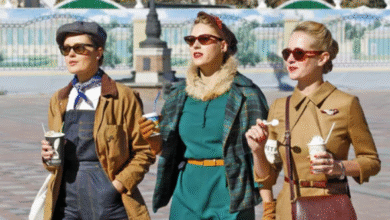Sustainable Fashion: How to Dress Smart and Save the Planet

In an age of climate change and overflowing landfills, the choices we make about what we wear can either hurt or help the planet. “Sustainable fashion” isn’t just a trendy buzzword—it’s a revolutionary approach to style that promotes responsibility, durability, and eco-consciousness. In this guide, we’ll explore everything you need to know about dressing smartly while being kind to the Earth.
Understanding Sustainable Fashion
What is Sustainable Fashion?
Sustainable fashion refers to clothing and accessories that are designed, manufactured, distributed, and used in ways that are environmentally friendly and ethically responsible. This includes using renewable resources, minimizing waste, reducing carbon footprints, and ensuring fair treatment of workers throughout the supply chain.
The Environmental Impact of Fast Fashion
Fast fashion thrives on high volume and low cost. However, its hidden costs are devastating:
- Water Waste: Producing a single cotton shirt requires over 2,700 liters of water.
- Pollution: Textile dyeing is the second-largest water polluter globally.
- Landfills: Around 92 million tons of textile waste are generated annually.
Benefits of Choosing Eco-Friendly Clothing
- Reduces Environmental Footprint
- Supports Ethical Labor
- Saves Money in the Long Run
- Promotes Unique and Timeless Style
Key Principles of Dressing Sustainably
Buy Less, Choose Well
Avoid impulse purchases. Instead, invest in high-quality garments that you truly love and will wear for years.
Prioritize Quality Over Quantity
Durable fabrics and well-crafted clothing last longer and resist wear and tear, reducing the need for frequent replacements.
Embrace Timeless Styles
Fads fade, but classic pieces like white shirts, black trousers, and denim jackets never go out of style. These staples reduce waste and enhance wardrobe flexibility.
Eco-Conscious Fabric Choices
Organic Cotton vs. Conventional Cotton
Organic cotton is grown without harmful pesticides and uses significantly less water. Conventional cotton, on the other hand, is one of the most chemically intensive crops.
The Rise of Bamboo, Hemp, and Tencel
- Bamboo: Fast-growing and biodegradable.
- Hemp: Requires little water and no pesticides.
- Tencel: Made from wood pulp in a closed-loop process, minimizing waste.
Recycled and Upcycled Materials
Using recycled polyester or upcycled textiles from old garments helps reduce landfill waste and resource extraction.
Ethical Fashion Practices
Fair Trade and Worker Rights
Ethical brands ensure safe working conditions and fair wages for garment workers, often in regions where exploitation is rampant.
Transparency in the Supply Chain
A transparent brand reveals where and how its products are made, giving consumers the power to make informed choices.
Sustainable Shopping Habits
Thrifting and Second-Hand Shopping
Buying pre-loved clothing reduces demand for new production. Thrift stores, vintage shops, and online resale platforms are great sources of stylish, affordable finds.
Renting vs. Buying
Need an outfit for a one-time event? Clothing rental services offer designer pieces without the environmental burden of ownership.
Capsule Wardrobes
A capsule wardrobe consists of a limited number of versatile pieces that can be mixed and matched. This minimalist approach reduces clutter and encourages mindful purchases.
Brands Leading the Sustainable Fashion Movement
Notable Eco-Friendly Brands
- Patagonia: Known for its commitment to environmental activism.
- People Tree: Pioneering fair trade fashion.
- Reformation: Combines chic style with sustainable practices.
Certifications to Look For
Look for:
- GOTS (Global Organic Textile Standard)
- Fair Trade Certified
- OEKO-TEX Standard 100
- B Corp Certification
DIY and Upcycling Tips
Transforming Old Clothes into New Pieces
Repurpose old jeans into shorts, turn a t-shirt into a tote bag, or add patches and embroidery to give old clothes a fresh look.
Basic Sewing and Repair Skills
Learning to sew buttons, fix hems, and patch holes extends the life of your garments and keeps them out of the trash.
Caring for Your Clothes Sustainably
Eco-Friendly Washing Techniques
- Wash in cold water
- Use eco-friendly detergents
- Line dry instead of using a dryer
Extending Garment Life Through Maintenance
Storing clothes properly, avoiding overwashing, and rotating outfits reduce wear and prolong life.
Seasonal and Occasion-Based Sustainable Dressing
Sustainable Choices for Summer and Winter
- Summer: Lightweight, breathable organic fabrics.
- Winter: Layering with natural wool and second-hand coats.
Dressing Sustainably for Events
Opt for timeless formalwear that can be reworn or rented instead of fast fashion one-offs.
Impact of Consumer Choices
How Your Dollar Supports Ethical Fashion
Every purchase is a vote. By choosing ethical brands, you support better practices and drive industry change.
Spreading Awareness Through Style
Wearing sustainable clothing can spark conversations and inspire others to join the movement.
Tackling Greenwashing in Fashion
Identifying Authentic Sustainable Claims
Look for third-party certifications and specific information about sourcing, rather than vague terms like “eco” or “natural.”
Red Flags in Marketing Language
Be wary of brands that:
- Lack transparency
- Offer no proof or metrics
- Use trendy language without action
The Role of Technology in Sustainable Fashion
Innovations in Fabric Production
New technologies are creating biodegradable and lab-grown fabrics that reduce the need for natural resources.
Digital Tools for Reducing Waste
AI-powered inventory management and 3D design tools help reduce overproduction and textile waste.
Minimalism and Mindful Dressing
How Less Can Be More
Having fewer clothes can actually expand your style by encouraging creativity and conscious choices.
The Emotional Value of Clothing
Mindful dressing builds a deeper connection with your wardrobe and reduces the tendency to overconsume.
Youth, Culture, and the Sustainable Style Revolution
How Gen Z is Changing Fashion Norms
Gen Z values ethics and sustainability over brand prestige, pushing companies to align with these values.
Influencers Advocating for the Planet
Sustainable fashion influencers use their platforms to promote conscious choices, showcasing that eco can be chic.
Frequently Asked Questions
What is the most sustainable fabric?
Hemp, Tencel, and organic cotton are among the most sustainable fabrics due to their low environmental impact and biodegradability.
How can I spot greenwashing in brands?
Look for verifiable certifications, full supply chain transparency, and specifics on sustainability efforts.
Is sustainable fashion expensive?
While upfront costs can be higher, sustainable pieces last longer, reducing long-term spending.
Can I be fashionable and eco-conscious?
Absolutely! Many stylish brands now offer fashionable yet sustainable collections.
What are capsule wardrobes?
A capsule wardrobe is a curated set of versatile pieces that can be combined in various ways for multiple outfits.
How does second-hand shopping help the environment?
It reduces the need for new production, diverts textiles from landfills, and lowers carbon emissions.
Conclusion: Dressing for a Better Future
Summary of Key Takeaways
Sustainable fashion is more than a trend—it’s a commitment to the planet and future generations. From fabric choices to shopping habits, every small step makes a difference.
Your Role in the Movement
Start today by evaluating your wardrobe, supporting ethical brands, and sharing your journey. Together, we can redefine fashion—one smart choice at a time.



